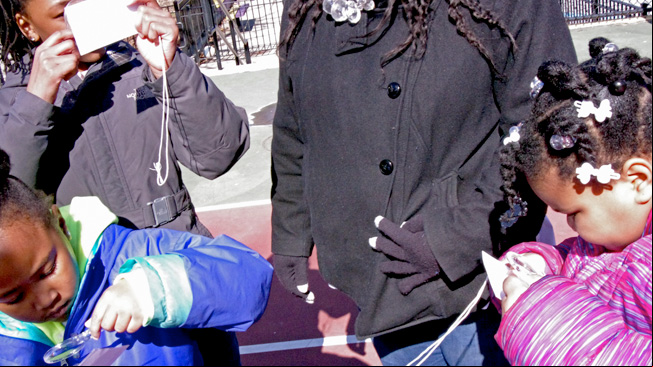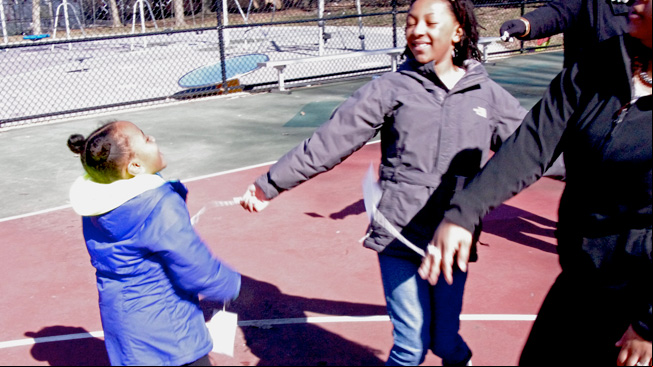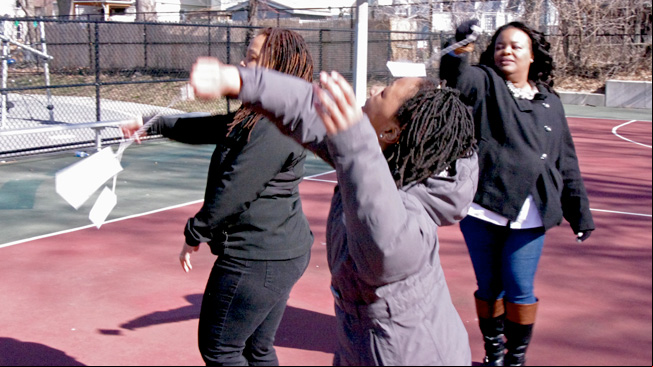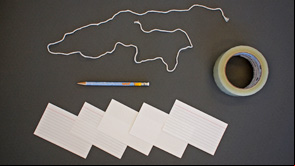Wind Catcher 1f103v

What Is This Activity? 1246j
What's in your air? You and your child wear a sticky badge around your city or town to capture dust, soot, pollen, seeds … and what else? 3q1b6r
Introduction 591p71
Go Outside 45 minutes 4y2v21

- Make Wind Catchers (two or more): Poke a hole near the top of a lid or index card with the pencil and tie a string through it. Smear on a thin layer of petroleum jelly. (Don't have any? Use clear tape wrapped in a loop so that a sticky side faces out.)
- Use your Wind Catchers in one or more of the following ways. First, check the weather forecast to avoid rain.
- Tie one inside your home and one outside, near your home. Collect them after a few days.
- Tie them where buildings or trees block wind (small courtyards, for example) and where wind blows strongly (near water, in open areas). Collect them after a few days.
- Wear one like a badge or pin as you walk all over your city or town.
- Tie one to the handlebar of a bike or to a car and ride around.
- Where else would you like to hang them?
- Walk around the neighborhood and look for sooty buildings —ones with a dark layer of grime. (Leave your Wind Catcher on.) Brainstorm together: What parts of the city have the dirtiest air? (Near factories, where wind is blocked, where traffic is heavy.) Explain that plants can absorb pollution that is harmful to animals. They also give off oxygen for animals to breathe.
- Optional: If available, climb with your child to a high point or a fenced rooftop overlooking your city. Is the sky clear blue from ground to top? Or do you see a low-lying layer of brownish smog ("smoke" and "fog") over the city? Breathe: Does the air smell fresh or yucky?
- For older or more mature children: Challenge them to keep a photo record of the scene by taking one picture at the same time every day, for as many days as they can. They can compare their visual evidence with the "Forecast: Pollen and Smog" data described below.
- Wonder aloud: What did the Wind Catchers catch? Which ones are dirtiest? (A magnifying lens is helpful but not necessary to see the particles.) (Tips: Plant pollen is yellow, brown, or white. Soot and dust are dark. Also look for fluffy seeds that drift in the wind.) Discuss: What makes city air dirty? (Exhaust from cars, burning oil or gas to heat buildings, factory smokestacks, etc.)
- Try this activity at different times of the year. Do the results change?
Explore Some More 736219
Forecast: Pollen and Smog? 1r3b1
Many people are allergic to pollen, a powder that plants give off. All people are harmed by smog, a pollutant that contains a gas called ozone. Ozone damages lungs, causing breathing problems and coughing.
What are the pollen and smog levels in your city? Wind Catchers can give you a general idea. But if you want to know more, check the local weather forecast for your city's Air Quality Index and pollen counts each day. Track them over a week and take a walk each day to see if you can notice differences—"good" days versus "bad" days.
The Manta Ray Mystery 6r6k10
Wind can move things like flags, leaves, and trash. Watch this short PLUM LANDING video in which Cooper and Clem investigate a very windy city. Ask: You can't see wind, so how can you tell when it moves?
Outdoor Family Fun with Plum App 4u1rj
This app gets families outdoors exploring the world. Every day, the app offers five outdoor missions to get everyone thinking and talking about nature and the science that's all around us.


